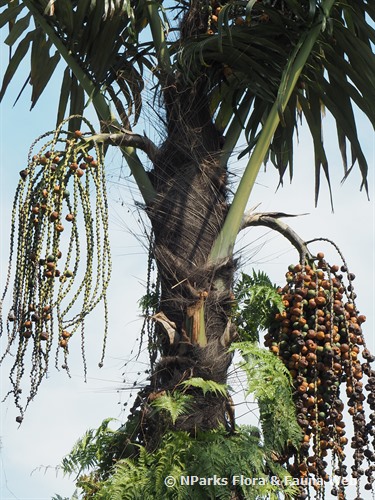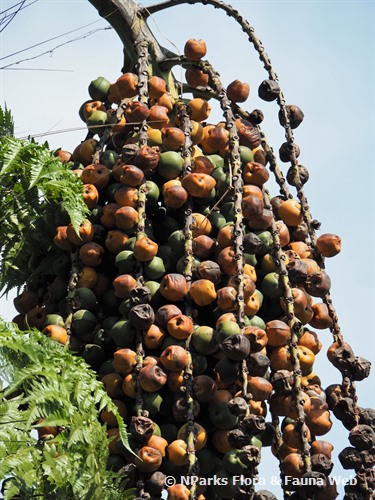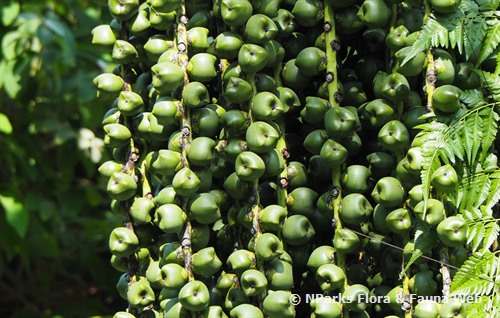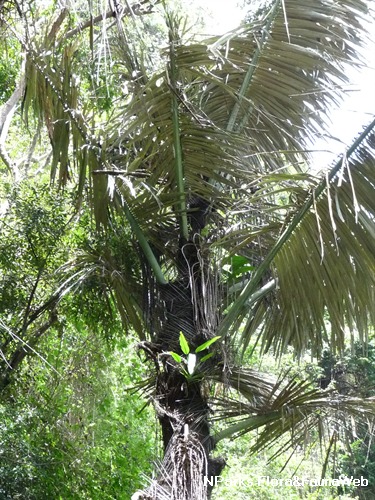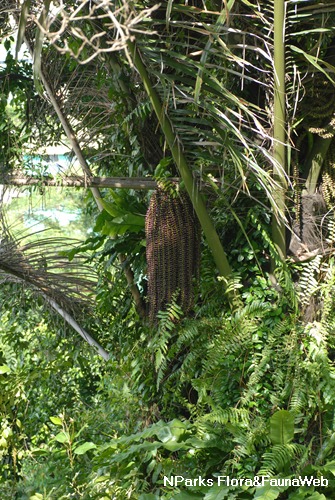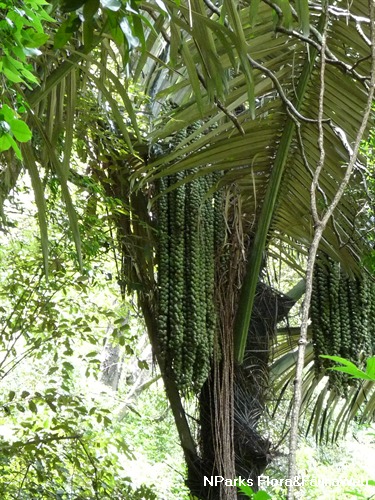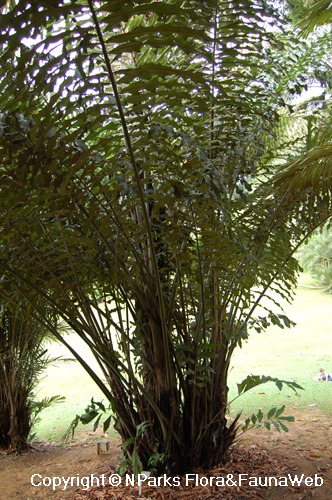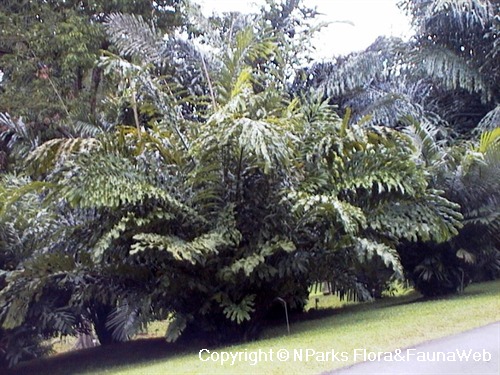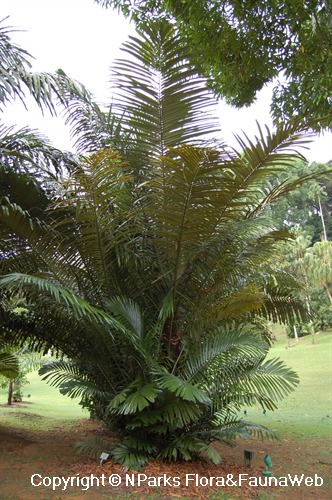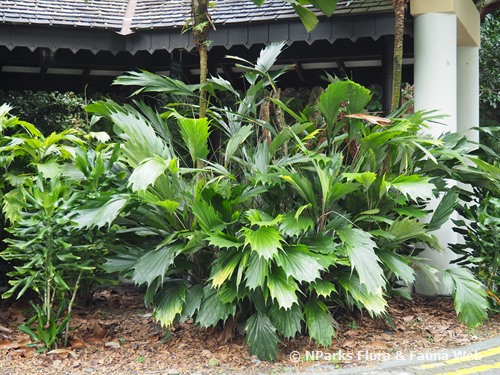
Back
Arenga pinnata
| Family Name: | Arecaceae (Palmae) |
| Common Name: | Sugar Palm, Kabong, Kabung, Gomuti Palm |
Name
Classifications and Characteristics
| Plant Division | Angiosperms (Flowering Seed Plants) |
|---|---|
| Plant Growth Form | Palm |
| Mode of Nutrition | Autotrophic |
Biogeography
| Native Distribution | Indonesia, Malaysia and Myanmar |
|---|---|
| Native Habitat | Terrestrial |
| Preferred Climate Zone | Tropical, Sub-Tropical / Monsoonal |
Description and Ethnobotany
| Growth Form | Solitary palm growing up to 20 m tall with a deep blackish crown of massive and steeply ascending leaves. |
|---|---|
| Trunk | Trunk entirely concealed by persistent fibrous black leaf sheaths and bases. |
| Flowers | Flowers crowded and emitting with a faint musty smell. |
| Cultivation | Widely cultivated in India and Malaysia. |
| Ethnobotanical Uses | Edible Plant Parts : Edible Seeds Timber & Products: Leaf sheaths are formally used by locals to make ropes. Others: Formally an important source of sugar for man. It is done by making a cut on the inflorescence and collecting the sugary liquid exuding out. |
Landscaping Features
| Desirable Plant Features | Ornamental Foliage |
|---|---|
| Landscape Uses | Suitable for Roadsides |
| Usage Hazard - Cons Remarks | Dead leaf stalk may cause damage when dropped from palm crown. |
Plant Care and Propagation
| Light Preference | Full Sun |
|---|---|
| Water Preference | Moderate Water |
| Plant Growth Rate | Moderate |
| Rootzone Tolerance | Moist Soils, Well-Drained Soils |
| Propagation Method | Seed |
Foliar
| Foliage Retention | Evergreen |
|---|---|
| Foliar Attachment to Stem | Petiolate |
| Foliar Shape(s) | Palm Fronds |
Floral (Angiosperm)
| Flower Grouping | Cluster / Inflorescence |
|---|
Fruit, Seed and Spore
| Mature Fruit Colour(s) | Black |
|---|---|
| Mature Seed Colour(s) | Black |
Image Repository
Others
| Master ID | 1993 |
|---|---|
| Species ID | 3285 |
| Flora Disclaimer | The information in this website has been compiled from reliable sources, such as reference works on medicinal plants. It is not a substitute for medical advice or treatment and NParks does not purport to provide any medical advice. Readers should always consult his/her physician before using or consuming a plant for medicinal purposes. |

